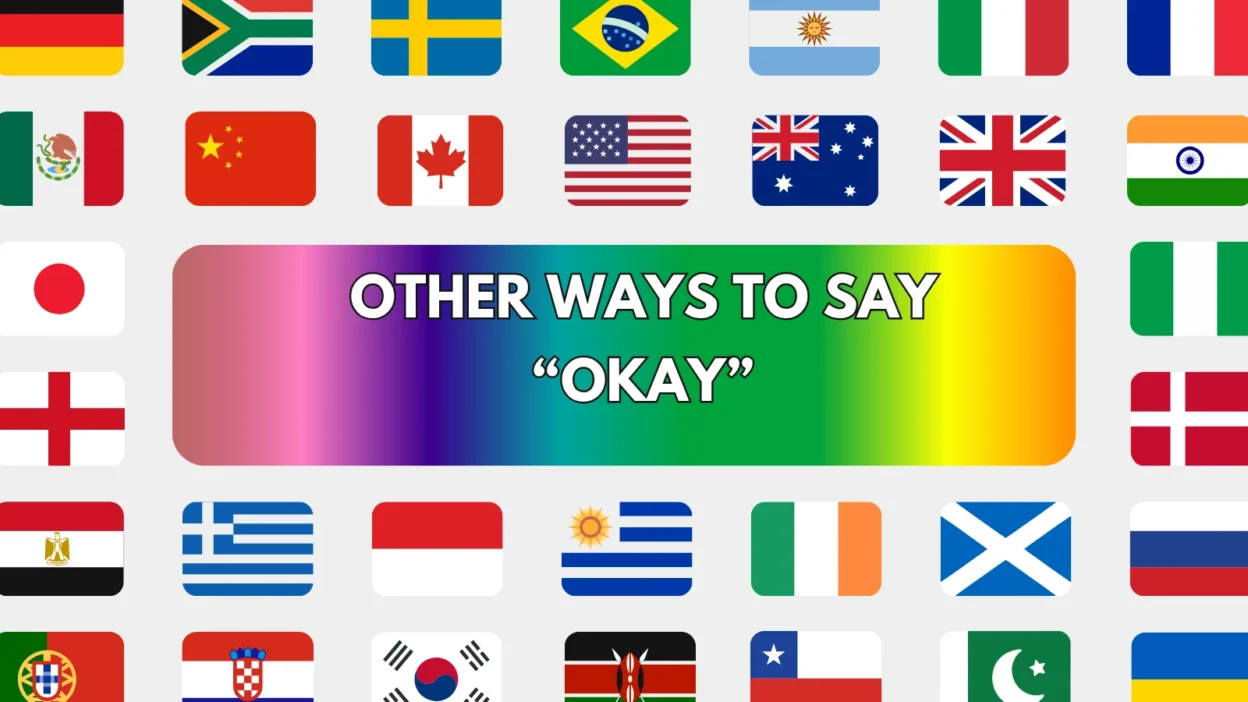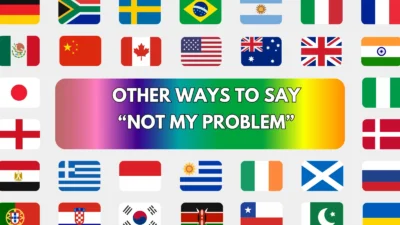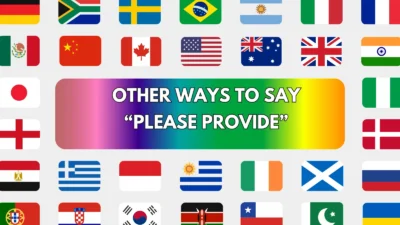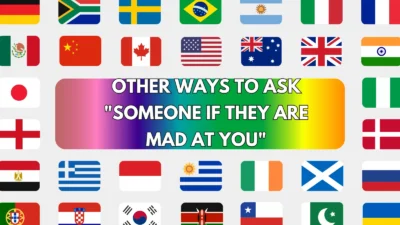We use “okay” all the time — in texts, work chats, and daily conversations. It’s short, flexible, and universal. But sometimes, “okay” feels too plain or doesn’t match the tone you want. Whether you need to sound more enthusiastic, professional, or casual, there are plenty of creative ways to say it.
Here are 25 alternatives to “okay” with meanings, examples, ideal contexts, and tone suggestions.
1. Sure thing
Meaning: A casual, confident agreement.
Detailed Explanation: Great for friendly or informal settings where you want to sound easygoing.
Scenario Example: Sure thing, I’ll send that over right now.
Best Use: Texts, team chats, or casual replies.
Tone: Friendly, relaxed.
2. Sounds good
Meaning: Shows approval and agreement.
Detailed Explanation: A common and positive way to confirm plans.
Scenario Example: Sounds good — see you at 2 PM.
Best Use: Conversations, scheduling, everyday talk.
Tone: Natural, upbeat.
3. Got it
Meaning: You understand what was said.
Detailed Explanation: Confirms receipt or comprehension without extra words.
Scenario Example: Got it — I’ll handle that by tomorrow.
Best Use: Work chats, emails, instructions.
Tone: Professional, concise.
4. Absolutely
Meaning: Strong agreement or confirmation.
Detailed Explanation: Adds enthusiasm and assurance.
Scenario Example: Absolutely, I’ll be there.
Best Use: Affirmations, promises, commitments.
Tone: Positive, confident.
5. You got it
Meaning: Informal way to confirm a request.
Detailed Explanation: Often used when you’re happy to help.
Scenario Example: You got it — I’ll take care of that now.
Best Use: Friendly or team environments.
Tone: Supportive, warm.
6. All right
Meaning: Neutral agreement or acceptance.
Detailed Explanation: Works well in both casual and semi-formal situations.
Scenario Example: All right, let’s get started.
Best Use: Conversations, meetings, casual responses.
Tone: Neutral, flexible.
7. No problem
Meaning: You’re happy to do it or don’t mind.
Detailed Explanation: A polite, easy-going way to agree or respond to thanks.
Scenario Example: No problem, I’ll handle it.
Best Use: Customer service, teamwork, casual replies.
Tone: Friendly, calm.
8. Fine by me
Meaning: Shows acceptance or lack of objection.
Detailed Explanation: Slightly informal but conveys willingness.
Scenario Example: Fine by me if we move the meeting to Friday.
Best Use: Group discussions, scheduling, teamwork.
Tone: Neutral, relaxed.
9. Of course
Meaning: Shows readiness or agreement without hesitation.
Detailed Explanation: Expresses politeness and eagerness to cooperate.
Scenario Example: Of course, I’d love to help.
Best Use: Customer service, polite responses.
Tone: Warm, courteous.
10. Yup / Yep
Meaning: Informal “yes.”
Detailed Explanation: Friendly and conversational, but avoid in formal writing.
Scenario Example: Yup, I’ll be there.
Best Use: Texts, chats, casual conversations.
Tone: Casual, cheerful.
11. Certainly
Meaning: A polite, formal version of “okay.”
Detailed Explanation: Adds professionalism to your confirmation.
Scenario Example: Certainly, I’ll forward that right away.
Best Use: Emails, client communication.
Tone: Polite, formal.
12. That works
Meaning: Confirms that a suggestion or plan is acceptable.
Detailed Explanation: Casual but cooperative.
Scenario Example: That works — see you at noon.
Best Use: Scheduling, collaboration, friendly talk.
Tone: Easy-going, agreeable.
13. Will do
Meaning: Promise to complete a task.
Detailed Explanation: Brief yet confident — perfect for work communication.
Scenario Example: Will do — I’ll update the report by morning.
Best Use: Professional or informal work settings.
Tone: Cooperative, efficient.
14. Alrighty
Meaning: Playful or friendly version of “all right.”
Detailed Explanation: Adds a cheerful or light-hearted touch.
Scenario Example: Alrighty, let’s get this started!
Best Use: Informal settings, conversations with friends.
Tone: Light, upbeat.
15. Consider it done
Meaning: Confidently agreeing to complete something.
Detailed Explanation: Strong phrase that shows reliability.
Scenario Example: Consider it done — I’ll finish it today.
Best Use: Work replies, leadership communication.
Tone: Assertive, dependable.
16. Cool
Meaning: Casual way to show acceptance or agreement.
Detailed Explanation: Trendy and modern, but not for formal use.
Scenario Example: Cool, let’s meet at 6.
Best Use: Friends, informal chats.
Tone: Relaxed, casual.
17. Okay then
Meaning: A conversational filler or soft agreement.
Detailed Explanation: Sounds natural when wrapping up or accepting something.
Scenario Example: Okay then, let’s move on.
Best Use: General conversation, transitions.
Tone: Neutral, flexible.
18. Roger that
Meaning: Military-inspired way of saying “understood.”
Detailed Explanation: Used humorously or casually for confirmation.
Scenario Example: Roger that — I’m on it.
Best Use: Team communication, light-hearted tone.
Tone: Playful, confident.
19. Affirmative
Meaning: Formal or technical confirmation.
Detailed Explanation: Used in structured or procedural communication.
Scenario Example: Affirmative, the plan is approved.
Best Use: Aviation, military, or professional protocols.
Tone: Serious, formal.
20. Deal
Meaning: Agreement reached.
Detailed Explanation: Short, confident way to seal an arrangement.
Scenario Example: Deal, we’ll finalize it tomorrow.
Best Use: Business or casual negotiations.
Tone: Confident, positive.
21. Aye
Meaning: Traditional or nautical way of saying yes.
Detailed Explanation: Old-fashioned but still used humorously or dramatically.
Scenario Example: Aye, captain!
Best Use: Playful or thematic settings.
Tone: Fun, expressive.
22. Right on
Meaning: Expression of approval or support.
Detailed Explanation: Often used in motivational or casual contexts.
Scenario Example: Right on! Let’s make it happen.
Best Use: Friendly conversations, motivational settings.
Tone: Energetic, informal.
23. Copy that
Meaning: Message received and understood.
Detailed Explanation: Common in radio or tech communication but also casual contexts.
Scenario Example: Copy that — I’ll start now.
Best Use: Workplace chats, operations, casual talk.
Tone: Professional, relaxed.
24. Perfect
Meaning: Enthusiastic confirmation that everything’s right.
Detailed Explanation: Stronger than “okay,” implies full satisfaction.
Scenario Example: Perfect, that’s exactly what I needed.
Best Use: Professional, customer support, planning.
Tone: Positive, confident.
25. Understood
Meaning: Clear acknowledgment of information.
Detailed Explanation: Polite and efficient; great for formal or serious exchanges.
Scenario Example: Understood — I’ll follow the instructions.
Best Use: Work emails, military, business.
Tone: Professional, respectful.
Conclusion
While “okay” is universally accepted, choosing the right alternative can better reflect your tone, intent, and confidence. Phrases like “Got it” or “Will do” fit work settings, while “Sure thing” or “Cool” suit casual talk.
Using variety not only makes your communication clearer but also keeps your interactions engaging, professional, and expressive.




